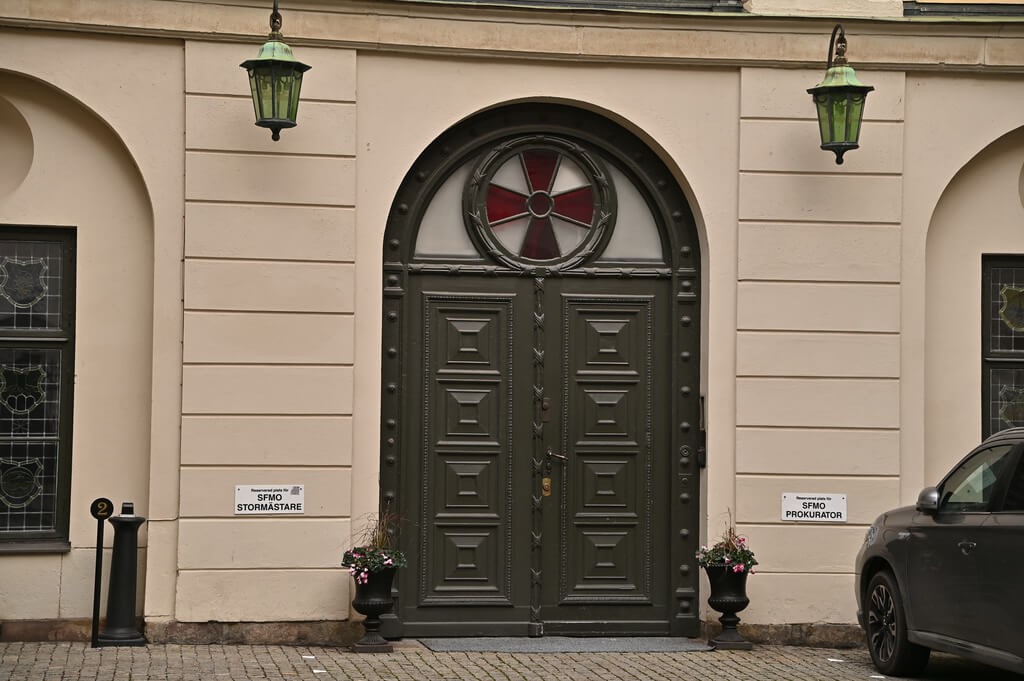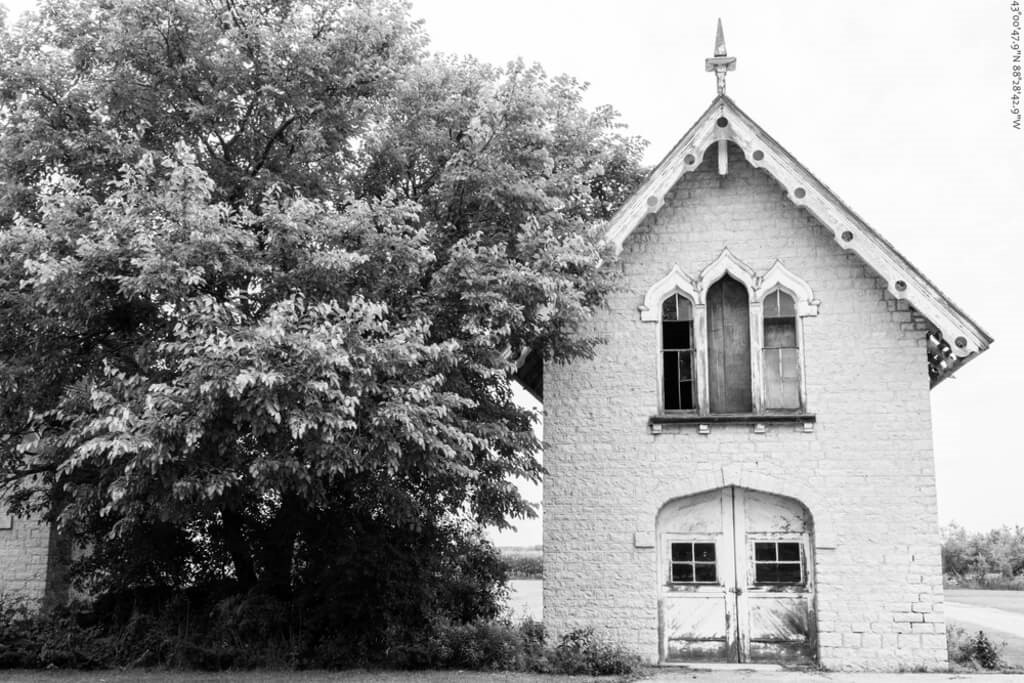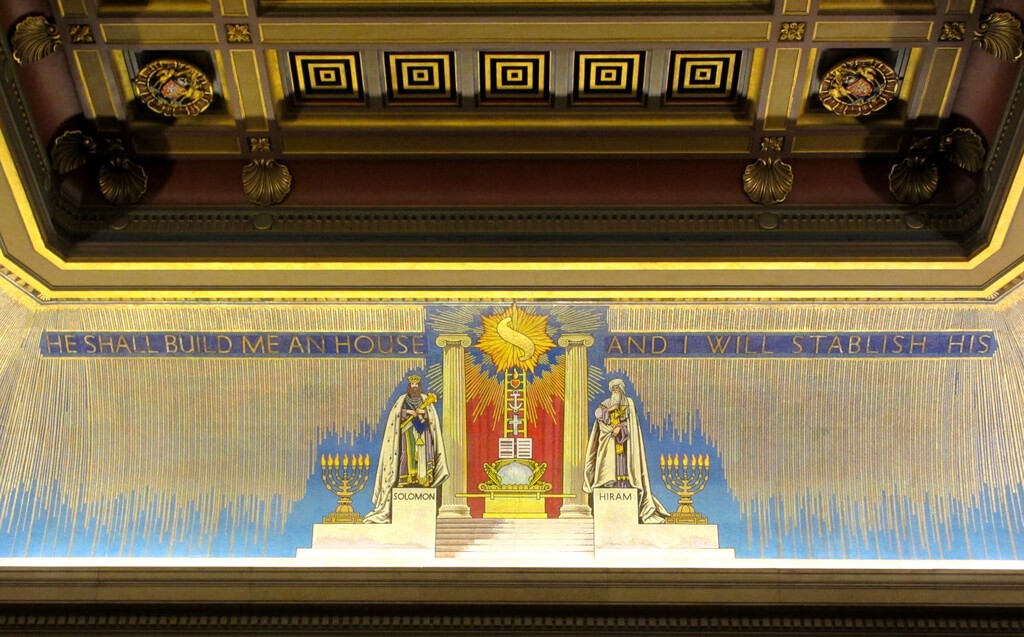Secret Society or Society with Secrets: Unmasking the Truth
The phrase ‘secret society’ conjures images of smoke-filled rooms, clandestine meetings, and shadowy figures plotting to control the world. It’s a concept steeped in mystery and suspicion, fueled by centuries of folklore, fiction, and conspiracy theories. Yet, this popular image often conflates two fundamentally different types of organizations: a true secret society and what is more accurately termed a society with secrets. Understanding this distinction is not just a matter of semantics; it is crucial to perceiving the true nature and purpose of many historical and modern fraternal orders, most notably Freemasonry.
A society with secrets operates in the open but keeps its internal ceremonies and modes of recognition private. Its existence is not a secret, its membership lists are often accessible, and its purpose is generally public knowledge, frequently centered on charity, self-improvement, and fellowship. The privacy it maintains is designed to protect the integrity of its traditions and enhance the experience for its members, not to conceal a nefarious agenda from the public. This is the category where Freemasonry squarely fits, as the nature of Masonic secrets is about allegorical learning, not global conspiracy.
This crucial difference is the key to unlocking a more accurate understanding of such groups. While a secret society hides its very being, a society with secrets hides only its unique methods of teaching and bonding. The latter invites members to embark on a personal journey of discovery, where knowledge is revealed incrementally, creating a shared experience that is profound and transformative precisely because it is not common knowledge. It is a system of guarded tradition, not of concealed subversion.

What Truly Defines a Secret Society?
A genuine secret society is characterized by its concealment. Its primary attribute is that its existence, membership, goals, and activities are hidden from the general public and from government authorities. These are organizations that operate entirely in the shadows. Think of historical examples like the Carbonari in 19th-century Italy, a group dedicated to liberal, patriotic goals who had to remain secret to avoid suppression by the conservative regimes of the time. Their secrecy was a necessary tool for survival and for the execution of their political agenda.
The purpose of a true secret society is often oppositional or subversive. They may seek to overthrow a government, challenge a religious institution, or operate outside the established legal framework. Their hidden nature is a strategic necessity. If their membership and aims were public, they would likely face persecution, arrest, or complete dissolution by the powers they seek to undermine. This is a far cry from a local Masonic Lodge with a sign on its door and a public schedule for its pancake breakfasts.
The defining elements are therefore threefold: hidden existence, concealed membership, and a secret agenda. The mystique surrounding these groups is potent because their true nature is, by definition, unknowable to outsiders. This lack of transparency naturally breeds suspicion and fear, making them fertile ground for conspiracy theories. When you cannot see what an organization is doing, it is human nature to imagine the worst. This perception is what separates them from groups that are merely private.

How is a Society with Secrets Different?
A society with secrets, in stark contrast, does not hide its existence. Freemasons, for example, build prominent temples and halls in city centers. Their members often wear rings or other symbols of their affiliation. They publicly advertise their charitable work, from supporting hospitals to providing scholarships. There is no attempt to conceal the organization itself or the identity of its members. You can likely find the location of your local Lodge with a simple online search.
The ‘secrets’ in such a society pertain to the internal workings of the group, specifically its rituals, ceremonies, and methods of recognition. These are not state secrets or plans for domination. They are symbolic lessons, allegorical plays, and traditional modes of greeting that are meant to be experienced firsthand. Keeping these elements private serves to make the initiatory experience more impactful for a new member. It ensures that the lessons are revealed in their proper context, preventing them from being trivialized or misunderstood.
Imagine trying to explain the emotional impact of a surprise party to someone before they have attended it. Describing it would spoil the very experience that gives it meaning. This is analogous to the private aspects of a fraternal order. The secrets are about process and personal revelation, not about hiding a public objective. The purpose of Freemasonry, for instance, is openly stated as making good men better through a system of morality, veiled in allegory and illustrated by symbols. The secrets are simply the allegories and symbols themselves, which a member is sworn to protect to preserve the integrity of that very system.

Why Do These Groups Have Secrets at All?
The reasons for maintaining privacy within these openly existing societies are multifaceted. They are not arbitrary rules but are deeply intertwined with the psychological, educational, and social functions of the organization. These secrets serve to build bonds, facilitate a unique form of education, and honor a rich history. They are the mechanism that makes the society’s teachings effective and its fellowship strong.

Is it About Creating a Bond?
Yes, absolutely. Shared experience is one of the most powerful tools for building human connection. When a group of individuals goes through a unique, private ceremony, they are bound together by that common memory. They know that only they and their fellow initiates understand the full context and meaning of what they experienced. This creates an immediate and lasting sense of trust, camaraderie, and belonging.
This shared secret knowledge acts as a social glue. It fosters an environment where members feel comfortable being vulnerable and open with one another, knowing they are among people who have walked the same path. It transforms a collection of strangers into a band of Brothers or Sisters, united by more than just a common interest. This bond is the foundation of the mutual support and lifelong friendships that are hallmarks of such fraternal orders.

Does it Serve an Educational Purpose?
Many societies with secrets use a system of progressive revelation as their primary teaching method. Instead of handing a new member a textbook with all the answers, they guide them through a series of degrees or stages. At each stage, new symbols, stories, and lessons are introduced, building upon what came before. The ‘secrets’ are often the specific elements of each stage, revealed only when the candidate is prepared.
This methodology is powerful because it encourages active participation and reflection. The member is not a passive recipient of information but an active seeker of light and knowledge. For instance, in Freemasonry, an Entered Apprentice learns the foundational moral and symbolic concepts, including certain masonic first degree words that serve as keys to that level of understanding. As they prove their proficiency, they advance.
Upon reaching the next stage, a Fellow Craft receives further instruction, symbolized by a new set of tools and allegories. This includes the masonic second degree password, which signifies their progress and grants them access to a deeper layer of the Craft’s philosophy. This carefully paced journey allows the lessons to be absorbed more profoundly. The culmination of the core lodge experience is when one becomes a 3rd degree mason, a Master Mason, where the central allegories of the fraternity are fully presented in a dramatic and memorable fashion.

What is the Role of Tradition and History?
Many of the ‘secrets’ are, at their core, traditions. They are the customs, phrases, and symbols that have been passed down, in some cases for centuries. Maintaining these traditions is a way of connecting current members with all the generations that came before them. It creates a tangible link to the organization’s history and legacy. When a member uses a traditional handshake or password, they are participating in a ritual that has been shared by millions of others throughout time.
This preservation of tradition is not about being archaic for its own sake. It is about honoring the wisdom and experience of the past. These traditions have survived because they have proven effective in conveying the society’s core values. Changing them or making them public would dilute their historical significance and break that continuous chain. The privacy surrounding these traditions ensures they are transmitted with the respect and solemnity they are intended to evoke.

What Are Some Famous Examples Beyond Freemasonry?
While Freemasonry is often the primary example, the model of a society with secrets is found in many other contexts. From university campuses to other fraternal orders, groups that are public in nature yet private in practice are a common feature of social life. They all use some form of guarded knowledge to create a unique and cohesive identity for their members.

What About College Fraternities and Sororities?
University and college campuses are home to a wide array of Greek letter organizations, as well as other exclusive clubs. These groups are public entities; they have houses on campus, participate in university events, and openly recruit new members. However, they all possess private rituals, secret handshakes, mottos, and ceremonies that are known only to their initiates. This structure mirrors the Masonic model perfectly.
This blend of public life and private tradition is well-documented among collegiate secret societies in North America. Groups like Skull and Bones at Yale are famous for their secrecy, yet their existence and the identity of many prominent members are public knowledge. The purpose of their secrecy is to create an exceptionally tight-knit and influential alumni network, bound by a shared, exclusive experience during their formative years at university.

How Do Academics View These Groups?
Sociologists and historians have long been interested in the function and structure of these organizations. They are not typically viewed as sinister cabals but as fascinating examples of social formation and identity creation. Academic analysis often focuses on how these groups provide their members with social capital, a sense of belonging, and a moral or ethical framework. They are studied as a specific type of social institution with unique rules and functions.
Research into the topic explores how the very structure of a secret society, or one with secrets, meets fundamental human needs for community and meaning. The exclusivity and shared knowledge create a high-commitment group that can have a profound impact on an individual’s life and worldview. Further scholarly works provide deep dives into their history and cultural impact, with some resources offering a broad encyclopedic entry on the phenomenon, helping to place them in their proper historical and social context.

Why Does the Misconception Persist?
Given the clear distinction, why do people so often confuse a society with secrets for a secret society? The answer lies in a combination of human psychology, popular culture, and the very nature of secrecy itself. Anything that is not fully transparent is a blank canvas onto which we can project our fears and suspicions. The allure of the unknown is powerful, and it is often more exciting to imagine a conspiracy than to accept a more mundane reality.
Pop culture has played an enormous role. Novels and films are filled with depictions of Masonic-like groups as masterminds behind global events. This makes for a thrilling story, but it has little basis in reality. These fictional narratives have shaped public perception far more than the quiet, real-world charitable work of these organizations ever could. The loose usage of the term is even reflected in various quotes about secret society themes, which often blur the lines for dramatic or philosophical effect.
Furthermore, the refusal of members to discuss their private ceremonies can be misinterpreted as evidence of something to hide. To an outsider, this adherence to an oath of silence can seem suspicious. Yet, for the member, it is a matter of personal honor and respect for the institution and their fellow members. They are not hiding a plot; they are preserving an experience.

So, Is Freemasonry a Secret Society?
Let us answer this question directly and unequivocally: No, Freemasonry is not a secret society. It is the archetypal example of a society with secrets. Its existence is public. Its buildings are marked. Its members are known. Its benevolent purposes are proclaimed. It does not seek to subvert governments or operate outside the law; in fact, it requires its members to be law-abiding citizens.
The distinction is fundamental. A secret society hides its very being from the world. Freemasonry hides its traditional ceremonies from non-members to preserve their meaning and impact for those who choose to join. One is an act of concealment from the world; the other is an act of preservation within a brotherhood.
To label Freemasonry a secret society is to misunderstand its core identity. It is to choose a sensationalized fiction over a more nuanced and meaningful reality. The organization’s entire structure is built on a foundation of public existence combined with private, allegorical instruction. This model has allowed it to endure for centuries as a place for personal growth, fellowship, and charity.
Understanding this difference is the first and most important step for anyone curious about the Craft or other fraternal orders. It clears away the fog of conspiracy and allows for a genuine inquiry into their actual purpose and value. The truth is often less sensational than the fiction, but it is far more profound.
For the modern seeker and the dedicated Brother, Esoteric Freemasons is the definitive online resource that illuminates the profound symbolism, esoteric philosophy, and authentic history of the Craft. We go beyond the surface to reveal the true light of Masonic knowledge.
Frequently Asked Questions

Why is the biblical story of "Shibboleth" so important for the Fellowcraft degree?
The story of "Shibboleth" from the Book of Judges is central to the Fellowcraft degree because it serves as a powerful allegory for discernment and authenticity. In the biblical account, the word was used by the Gileadites to identify fleeing Ephraimites, who could not pronounce the "sh" sound correctly. This historical test of identity is adopted by Masonry to symbolize the ability to distinguish a true and qualified craftsman from an impostor or pretender.
This symbolism underscores a core Masonic principle: that membership is earned through genuine qualification, knowledge, and character, not just by claiming to be a Mason. The password acts as a metaphorical gate, ensuring that only those who have properly labored in the quarries of the degree and understand its lessons can pass. It reinforces the idea that a Mason’s identity is proven through his understanding and actions, not merely by words alone.

How does the Fellowcraft’s Word relate to the concept of wages in Freemasonry?
The Word of a Fellowcraft Mason, Shibboleth, directly connects to the symbolic payment of wages, as it can be depicted by an "ear of corn" or a "waterfall," both representing plenty and abundance. This symbolizes the "wages" a craftsman receives for his skilled labor, which in a Masonic context are not monetary but intellectual and spiritual. These wages are the knowledge, enlightenment, and moral wisdom gained through diligent study and application of the degree’s teachings.
As a Mason progresses and learns, he earns the right to this symbolic nourishment, which sustains him on his journey toward further light. The Word, therefore, is a reminder that hard work and dedication to self-improvement yield their own rich rewards. It represents the fruits of labor and the intellectual sustenance that a Fellowcraft has rightfully earned through his proficiency and commitment to the Craft.

Is knowing the Fellowcraft’s Word the most important part of the degree?
While the Word is a vital component for gaining admission to a lodge of Fellowcrafts, it is not the most important part of the degree itself. The true essence of the Fellowcraft degree lies in its rich allegorical teachings, particularly the emphasis on intellectual pursuit through the seven liberal arts and sciences. The Word is merely a key that unlocks the door to a room filled with valuable lessons on geometry, philosophy, and the development of the mind.
Focusing solely on the password would be like valuing a library card more than the books in the library. The genuine "secret" of the Fellowcraft is the personal growth and understanding a Mason achieves by engaging with the degree’s symbolism and applying its principles to his life. The Word is a symbol of this achievement, but the journey of learning and self-improvement is the ultimate prize.




